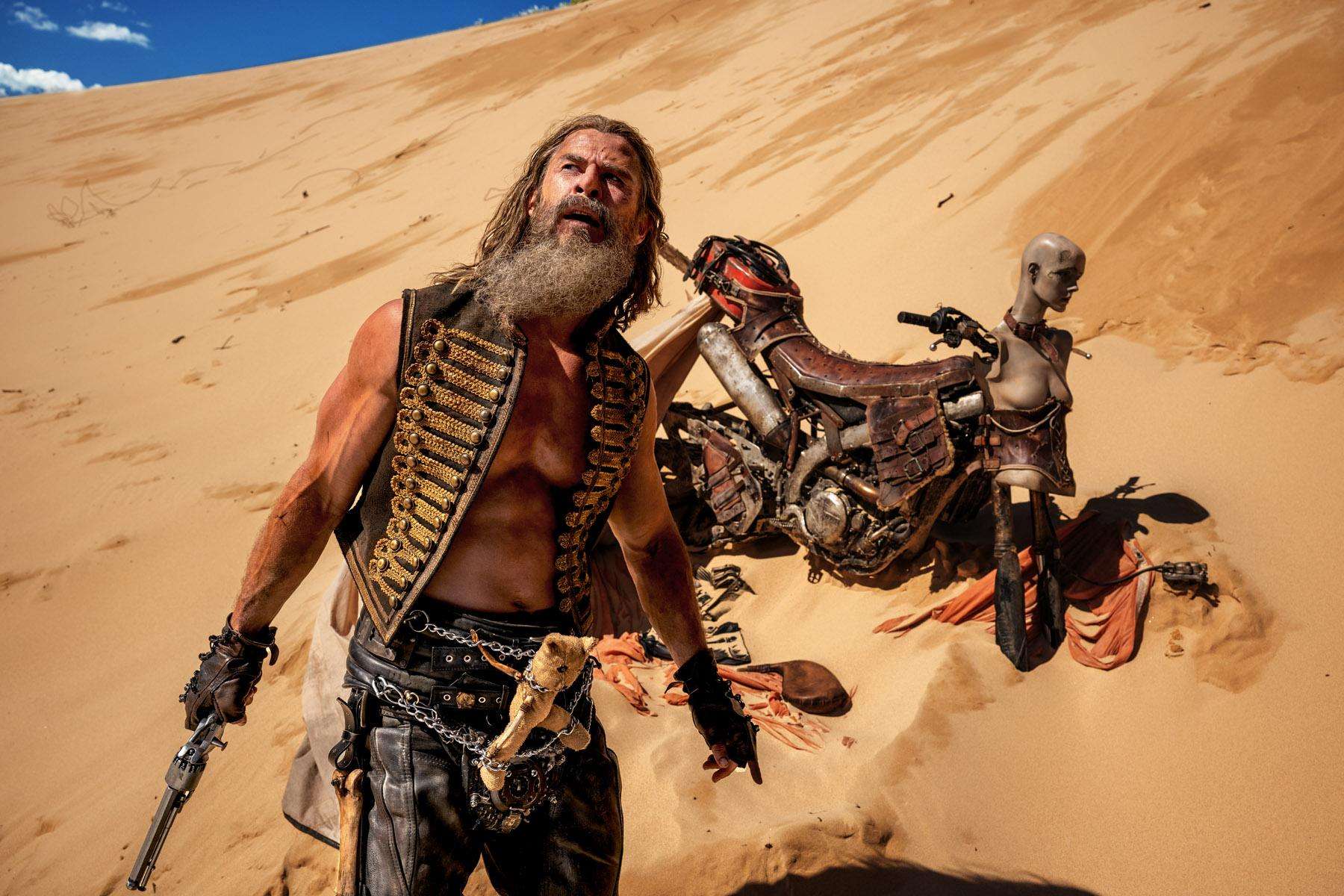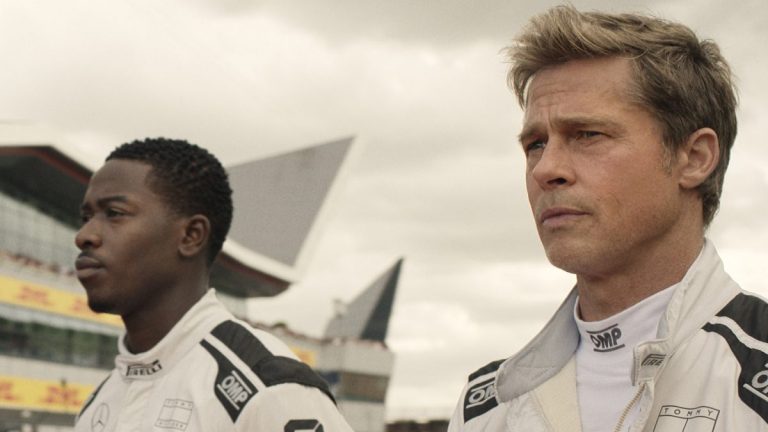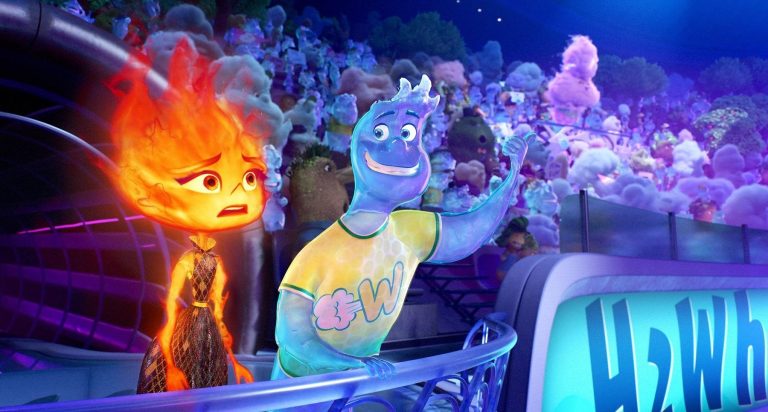When Dementus asks Furiosa, after blitheringly dismantling all her concepts about hate, whether she can make it epic, one can surmise George Miller is being asked the same question by his audiences regarding his follow-up to his magnum opus. The answer depends on one’s definition of the word “epic.” Unlike 2015’s “Fury Road,” which relied on action set pieces stacked one upon the other with breathtaking visuals and crash zooms reminiscent of Miller’s style, “Furiosa” is more measured. If one were to refer to “Fury Road” as a soft reboot of Miller’s dystopian world, which he had explored through his “Mad Max” trilogy, “Furiosa” is Miller trying to make sense of that array of ideas and visuals into a coherent world-building exercise.
The result is a film that, on paper, might sound like a cash grab. But unlike most prequels centered on breakout characters, Miller takes the opportunity to expand on the world and craft an episodic narrative highlighting Furiosa’s life within the world that Miller crafted way back, hinting at elements of it in 1979’s “Mad Max” and going full-blown leaning into the idiosyncrasies in 1982’s “Mad Max: Road Warrior.” However, since it deals with Furiosa, Miller takes the kernels of Furiosa’s past—the green place being hinted at as a matriarchal eden, her being kidnapped from and being brought into the wasteland, and characters reacting to that incident and Furiosa’s presence as Miller jumps forward in time through five chapter breaks.
Leaning into the novelistic aspect of storytelling, “Furiosa” is vast and yet surprisingly intimate. In choosing to slow down, Miller goes outward, expanding on what had been barely touched upon in “Fury Road”: the three fortified civilizations of the wasteland (the citadel, the Gastown, and the bullet farm), the different factions coming into conflict with each other, and how Furiosa becomes a pawn in a larger game, driven by her own ambitions and yet also at the risk of being driven by forces beyond her control, primal and completely at the mercy of the whims of the dusty and harsh wasteland.
Through that end comes Chris Hemsworth’s Dementus, perhaps a smaller pawn in the larger mythos of “Fury Road” and “Furiosa” combined, but very much integral to “Furiosa” as well as the history of that world. Hemsworth finally feels unshackled, able to tap into that edgy, wicked humor that he had reveled in in “Bad Times at the El Royale.” Through Hemsworth’s Dementus, Miller highlights how different the world of “Mad Max” is compared to other dystopias, simply through the idiosyncrasies of the vision as well as logical extrapolations of the ideas that Miller had introduced in his earlier trilogy and dragged to the forefront in the 21st century.

Connecting three motorcycles in the form of a chariot, Hemsworth represents the ideal of that world, where petrol and fuel are the manna and water is the currency. Thus, cults are formed based on godmen and their promises, irrespective of how disgusting or baffling the encapsulation of those promises ultimately turns out. In that universe, capitalism and socialism have different contexts, and their effects, while not explored in detail, are fascinating wrinkles that could be delved into.
The larger question, though, is whether “Furiosa” is the relentless set-piece heavy, action-packed singular chase movie that “Fury Road” had been. Unfortunately not, as “Fury Road” could be construed as a massive two-hour third act for the life of Furiosa. However, the notable alteration lies in the filmmaking itself. Miller’s construction of set-pieces had always been exquisite and visceral, but in “Furiosa,” he foregoes the rapid cuts, sharp zooms, and overuse of wide shots in favor of enhancing CGI and ensuring the feeling of watching an unbroken single-take set-piece.
The third chapter reaches its zenith with a “road war,” with the camera shuttling back and forth between Praetor Jack (Tom Burke) driving the oil rig while being attacked on all sides by Gastown rebels gliding on kites levitated by large fans (you have to witness to believe it) and polecats being ripped apart by explosions. All the while, Furiosa (Anya Taylor Joy) is trying her best to hang on to dear life beneath the oil rig while repairing the second engine. Miller also cleverly intertwines how Furiosa becomes a “black thumb” and later an “imperator” and avoids the fate of most women in Immortan Joe’s harem.

The set piece is notable because of how Miller seamlessly integrates CGI and practical effects. He reduces the visceral evocation and sharp cuts, and he reduces the crash zooms to a notable degree while ensuring the set pieces are stitched together so eloquently that the sequence of events feels as easy as following a narrative structure. It’s easier said than done, and it’s breathtaking to experience. Few filmmakers can manage spatial and temporal continuity in a set piece quite like Miller does in “Furiosa,” and it’s a pleasure to watch.
In contrast, Miller’s choice to take a mostly epic and novelistic approach to Furiosa’s life leads to a hagiographical depiction of the relationship between Praetor Jack and Imperator Furiosa. After the first magnificent set piece, the viewers become cognizant of the mentor-mentee partnership between the two of them but immediately have to reckon with a time jump and the idea that a relationship had blossomed between the two of them such that Furiosa would be rejuvenated in her desire for revenge against Dementus, a character that remains absent for conspicuous amounts of time in the second and third chapters.
It’s a structural issue inherent in the screenplay, made more so because of the archetypal characterizations allotted to all the characters. Taylor Joy, as Furiosa, especially manages to channel Theron’s Furiosa from 2015’s “Fury Road” but doesn’t have unique flairs of her own. On the contrary, the screenplay affords more screentime to Furiosa’s younger version, essayed by the remarkable Alaya Browne, and she brings gravitas to that role, which manages to highlight Anya Taylor’s version later on at the beginning of Chapter 2.
If “Mad Max: Fury Road” was George Miller’s evolution of his Ozploitation-laced dystopia into the 21st century and enthralled you with the sheer originality of that vision, “Furiosa” is a prequel that not only doubles down on the idiosyncrasies but takes time to flesh out and develop the world where such idiosyncracies could exist both in harmony and conflict with each other. That entails an unexpectedly slower pace but an equally unexpected epic scope, as well as an unexpectedly intimate and fascinating ending.










